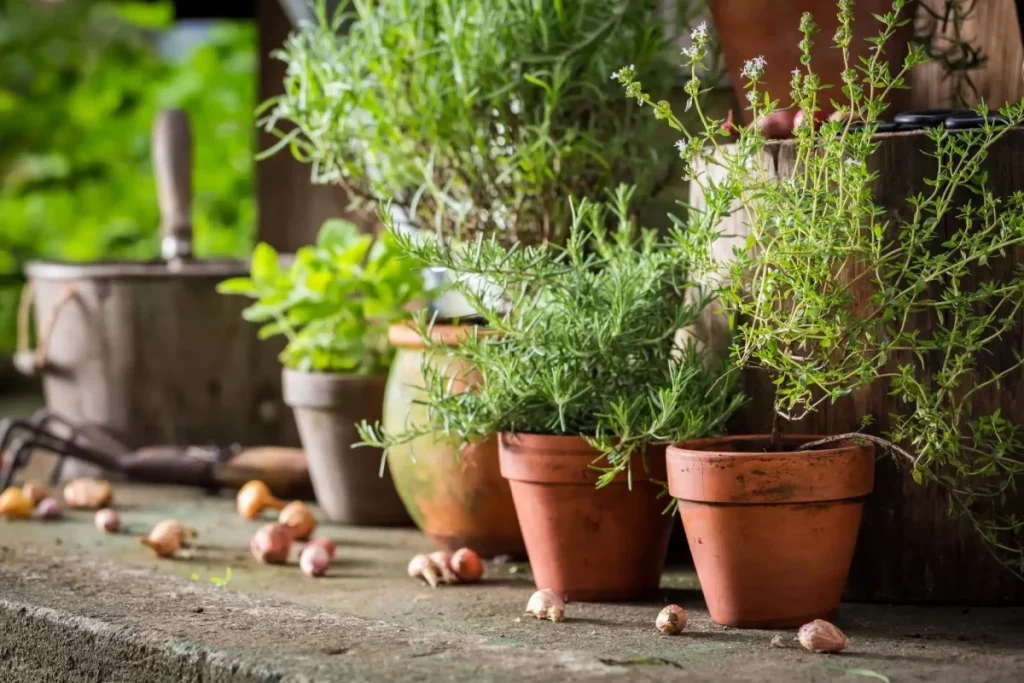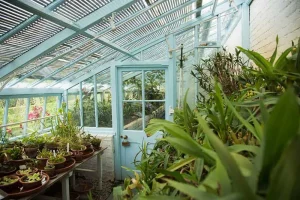Growing your own herbs and greens indoors can be a fun and rewarding experience, especially during the colder months when outdoor gardening may not be possible.
With a little bit of know-how and some basic supplies, you can easily cultivate a variety of delicious and nutritious herbs and leafy greens in your own home.
We’ll explore some of the easiest herbs and greens to grow indoors year-round, so you can enjoy fresh produce all seasons long.
Choose the right herbs
Select herbs that are well-suited for indoor growing, such as basil, mint, cilantro, and parsley. These herbs prefer well-draining soil and indirect sunlight.
Select herbs that thrive in indoor environments, such as basil, mint, cilantro, and parsley.
These herbs prefer well-draining soil and indirect sunlight, which can be easily simulated with grow lights.
Avoid using soil that is too dense or contains too much fertilizer, as this can lead to root rot and poor growth.
Instead, opt for a well-draining potting mix specifically designed for indoor plants.
Make sure your chosen herbs receive adequate water and nutrients, but not too much, as overwatering can lead to fungal diseases and root rot.
Proper care and attention to these details will yield a bountiful harvest of fresh, delicious herbs all year round.
Start with seedlings
Instead of starting from seeds, purchase seedlings from a local nursery or online. This will save you time and energy in the long run.
Starting with seedlings instead of seeds is a wise decision for those looking to garden successfully.
By purchasing seedlings from a local nursery or online, you can bypass the lengthy and often unpredictable process of germination and growth that comes with starting from seeds.
Seedlings have already developed their roots and are much more robust than seeds, making them more resilient to adverse growing conditions.
This means that you can enjoy an earlier harvest and a more abundant yield.
Seedlings are more likely to be disease- and pest-resistant, as they have already been exposed to certain stressors in their early stages of growth.
By starting with seedlings, you can save time and energy in the long run, while also ensuring a more successful and productive gardening experience.
Pick the right container
Use a container that has drainage holes to prevent overwatering. A shallow container with good drainage is ideal for indoor growing.
When it comes to growing plants indoors, choosing the right container is important to ensure healthy and thriving plants.
One important factor to consider is the presence of drainage holes, as overwatering can be detrimental to plant growth.
A shallow container with good drainage is ideal for indoor growing, as it allows for optimal root growth and prevention of waterlogged soil.
Look for containers with drainage holes in the bottom to prevent excess water from accumulating in the soil.
This will help to maintain a well-draining environment, which is essential for healthy root development and prevention of root rot.
Shallow containers with drainage holes are typically lighter and easier to move around, making them a great choice for indoor gardening.
By selecting a container with these features, you can ensure that your plants receive the right amount of moisture and nutrients to thrive.
Use a well-draining soil mix
Avoid using regular potting soil as it can retain too much water. Instead, opt for a soil mix that is specifically designed for herbs and greens.
When it comes to growing herbs and greens, using a well-draining soil mix is important for their health and success.
Regular potting soil can retain too much water, which can lead to root rot and other problems.
Instead, opt for a soil mix that is specifically designed for herbs and greens.
This type of soil mix is typically made up of a blend of peat moss, perlite, and vermiculite, which allows for proper drainage and aeration.
This will help prevent waterlogged soil and ensure that your herbs and greens receive the oxygen they need to thrive.
Look for a soil mix that is specifically labeled as draining or hydrating to ensure that it will meet your plants’ needs.
You can add a handful of small stones or perlite to the soil mix to improve drainage and prevent waterlogged soil.
By using a well-draining soil mix, you’ll be giving your herbs and greens the best possible start in life, and setting them up for healthy growth and abundant harvests.
Provide the right amount of light
Most herbs and greens prefer bright, indirect sunlight. A south-facing window is ideal for indoor growing. If natural light is scarce, you can supplement with grow lights.
When it comes to providing the right amount of light for your indoor herb or vegetable garden, the key is to strike a balance between brightness and indirectness.
Most herbs and greens prefer bright, indirect sunlight, which can be challenging to replicate indoors.
However, a south-facing window is often the ideal location for indoor growing, as it receives the most natural light throughout the day.
This natural light can provide the perfect amount of intensity and duration for your plants to thrive.
If natural light is scarce, you can supplement with grow lights, which can provide the additional light your plants need to flourish.
Grow lights come in a variety of types, such as LED, fluorescent, and incandescent, and can be positioned at different angles and heights to provide the optimal amount of light for your specific plants.
By providing the right amount of light, you can ensure that your indoor garden is healthy, happy, and productive.
Water correctly
Herbs and greens require consistent moisture, but overwatering can lead to root rot and other problems. Water the soil, not the leaves, and allow the top inch of soil to dry out between waterings.
Watering is a important aspect of herb and green care, but it’s important to water correctly to avoid common mistakes that can lead to root rot and other problems.
To ensure optimal watering, it’s essential to understand the specific needs of your herbs and greens.
Most herbs and greens require consistent moisture, but overwatering can cause more harm than good.
Instead of watering the leaves directly, water the soil around the base of the plant, taking care not to oversaturate the soil.
This helps prevent fungal diseases and promotes healthy root growth.
It’s also essential to allow the top inch of soil to dry out between waterings to prevent waterlogged soil conditions.
Maintain the right temperature
Most herbs and greens prefer daytime temperatures between 65-75°F (18-24°C) and nighttime temperatures around 55-65°F (13-18°C).
To ensure optimal growth and flavor for your herbs and greens, it’s essential to maintain the right temperature ranges.
Most herbs and greens thrive in daytime temperatures between 65-75°F (18-24°C), with a slight drop to around 55-65°F (13-18°C) at night.
This temperature fluctuation helps to promote healthy growth and prevent the plants from becoming stressed or waterlogged.
For example, basil and cilantro prefer warmer temperatures during the day, while mint and parsley do better with a slightly cooler nighttime temperature.
By maintaining the ideal temperature ranges, you’ll be able to cultivate delicious and nutritious herbs and greens for your culinary creations.
Harvest regularly
Regular harvesting will encourage the plant to continue growing and producing new leaves. Use sharp scissors or pinch off individual leaves to encourage branching.
To ensure optimal growth and leaf production, it’s essential to harvest your herb plants regularly.
This encourages the plant to continue growing and producing new leaves, as it believes it needs to constantly regenerate its resources.
When harvesting, use sharp scissors to carefully trim the leaves from the stems, leaving a small amount of stem intact to promote new growth.
This technique, known as pinching, helps to encourage branching and increase the overall health and yield of your plants.
By regularly harvesting and pinching your herbs, you’ll be rewarded with a bountiful crop of fresh, flavorful leaves.
Want More? Dive Deeper Here!
Hey there! If you’re the type who loves going down the rabbit hole of information (like we do), you’re in the right spot. We’ve pulled together some cool reads and resources that dive a bit deeper into the stuff we chat about on our site. Whether you’re just killing time or super into the topic, these picks might just be what you’re looking for. Happy reading!






